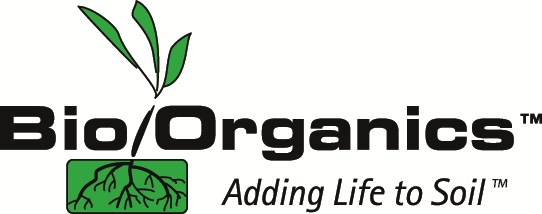One of the most logical candidates for biological methods is a lawn. By simply creating favorable conditions for beneficial microbial organisms and providing a broad range of minor/trace minerals, grass can thrive with no added fertilization beyond clippings and will be far more drought resistant than chemically dependent turf grown in lifeless soils.
There will also be no thatch build-up, as the clippings are happily eaten by the large populations of soil organisms (and then, of course, their excretions become free fodder for the grass). A mulching mower is advised - don't routinely remove clippings.
For new lawns, we recommend tilling in compost, volcanic minerals, and mycorrhizal spores before seeding. If the soil is heavy clay, adding a couple inches of clean builder's sand is also advisable. This extra soil prep will pay off in long-term easy-care results. What you are doing is making soil conditions perfect for plant supporting organisms, from earthworms down to nitrogen fixing bacteria. These will all play roles in becoming "underground caregivers" for the grass roots.
And by the way, pay no attention to those who mutter the old "clay and sand make concrete" line. I guarantee they won't. If any skeptics want proof, just dump a bag or two of sand 3-4 inches deep on one spot in your garden and work it into the top 6-8 inches of soil, along with a little compost and a handful of trace minerals - add NO fertilizer. Then plant a mycorrhizae inoculated tomato or melon plant in the middle of that spot and see if it doesn't out perform others by a wide margin. Note how nice and loose and moist that soil will stay during the growing season - about like good potting soil.
Back to lawns. For established lawns, the fall season is the best time to renovate them. For serious results I'd suggest starting by hiring a professional aerating service. Be sure that they use a large machine that actually removes plugs several inches deep and doesn't just poke holes in the lawn. Have them dispose of the plugs.
Then, quickly before the holes grow shut, add about an inch of clean sand, volcanic minerals and mycorrhizal inoculant. Rake as much of the material into the holes as possible. DO NOT use any chemical fertilizer ever again - that will only disrupt the healthy biological process that you are trying to establish.
In the spring when new growth begins, lightly top dress the lawn with compost (mushroom compost is an excellent material if available, but any composted vegetable matter will do). Again, DO NOT put any high-analysis "lawn food" on the grass. You are now using a powerful natural biological approach instead of quick-green, fast-fade, soil chemistry.
I occasionally still apply some low-analysis dry organic fertilizer - either pelleted fish or a feather-meal blend - to my own lawn, but this is probably not really necessary. In years when I don't bother fertilizing, I don't see much difference and the grass looks nice all summer with minimal watering.
NOTE: We offer a combination volcanic minerals and mycorrhiza spores product - MycoMinerals - that is ideal for lawns or golf course greens. Visit our website for ordering information. If you don't want to go to the full effort of aerating/sanding your existing lawn, just scattering the MycoMinerals and watering it in this fall will provide benefits. Test a 4-lb. jar ($29.50) on 200 square feet, mark that area and compare the results next spring, and, again, do refrain from fertilizing that area - that will ruin the test.
I have also been asked if we sell the volcanic trace minerals separately and we may do that in the future. The mine site owners are planning to make a very large investment in developing the unique deposit near Crater Lake. They are mostly thinking of agricultural uses, but I think they will package it into 40-lb. bags. If so, we will add them to our product line.
Cheers, and good growing,
Don Chapman
President, BioOrganics, Inc.
